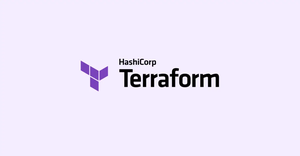Introduction
Managing MIME types in NGINX determines how browsers handle different types of files. Learning to configure MIME types in NGINX is crucial for web developers and server administrators. This tutorial will cover everything from the basics of MIME types to advanced configurations, complete with code examples showing expected outputs.
Understanding MIME Types in NGINX
Multipurpose Internet Mail Extensions (MIME) types are a way of defining the data type of a file. Web servers use MIME types to tell browsers how to handle files appropriately. When a file is served, the server includes the file’s MIME type in the HTTP response header, and the browser then decides how to process the content, whether to display it, download it, or open it with an associated application.
NGINX includes the mime.types file, which contains mappings between file extensions and MIME types. You can typically find this file in the /etc/nginx or /usr/local/nginx/conf directory. It’s included in the main NGINX configuration file, nginx.conf, using the include directive.
http {...
include /etc/nginx/mime.types;
...
}Defining Custom MIME Types
The first step is to locate and edit the mime.types file. Add or update MIME types based on your requirements. Here’s an example of how to define a custom MIME type:
types {
text/plain log;
}This tells NGINX to serve files with a .log extension as plain text.
Setting Default MIME Type
It’s also possible to define a default MIME type with the default_type directive. This type is used when a particular file’s MIME type cannot be determined:
http {
default_type application/octet-stream;
}This directive sets the default MIME type to ‘application/octet-stream’, which indicates that the file should be treated as binary data and a download will be prompted in the user’s browser.
Configuring MIME Types at the Server or Location Level
You can also set MIME types within a particular server or location block in your NGINX configuration. For finer-grained control, place the types directive inside these blocks:
server {
location /downloads/ {
types {
application/pdf pdf;
}
}
}With this configuration, PDF files under the /downloads/ path will be served with the correct MIME type.
Testing NGINX MIME Type Changes
After any change to MIME type configurations, you need to test your NGINX configuration for syntax errors and apply the changes. Use the following commands:
nginx -t
nginx -s reloadThe first command tests the configuration file for syntax errors, and the second reloads the configuration without restarting the server. Assuming the configuration is valid, new MIME type settings should take effect immediately.
MIME Type Verification
To verify that NGINX is serving the correct MIME type, you can use tools such as curl to inspect the HTTP headers:
curl -I http://example.com/sample.pdfThe -I option fetches the HTTP header only. You should see the Content-Type header with the appropriate MIME type for the PDF file requested.
Advanced MIME Type Handling
In more advanced use cases, such as handling dynamic content or specific file handling behavior, you might need to use NGINX’s map directive. For example, creating different content types for different query parameters:
http {
map $arg_download $downloadable_content_type {
default application/octet-stream;
'pdf' application/pdf;
'image' image/png;
}
server {
location ~* \.dat$ {
types {};
default_type $downloadable_content_type;
}
}
}This advanced configuration maps query parameters to return different MIME types for .dat files.
Security Considerations
When configuring MIME types, it’s essential to be mindful of security implications. Incorrect MIME types might inadvertently facilitate security vulnerabilities like MIME-type sniffing attacks. Always ensure you serve user-uploaded content with a safe, non-executable MIME type like application/octet-stream.
Conclusion
MIME type configuration in NGINX is a powerful feature that can affect how users interact with your content. Understanding and applying correct MIME types is key to ensuring content is handled properly in users’ browsers.


